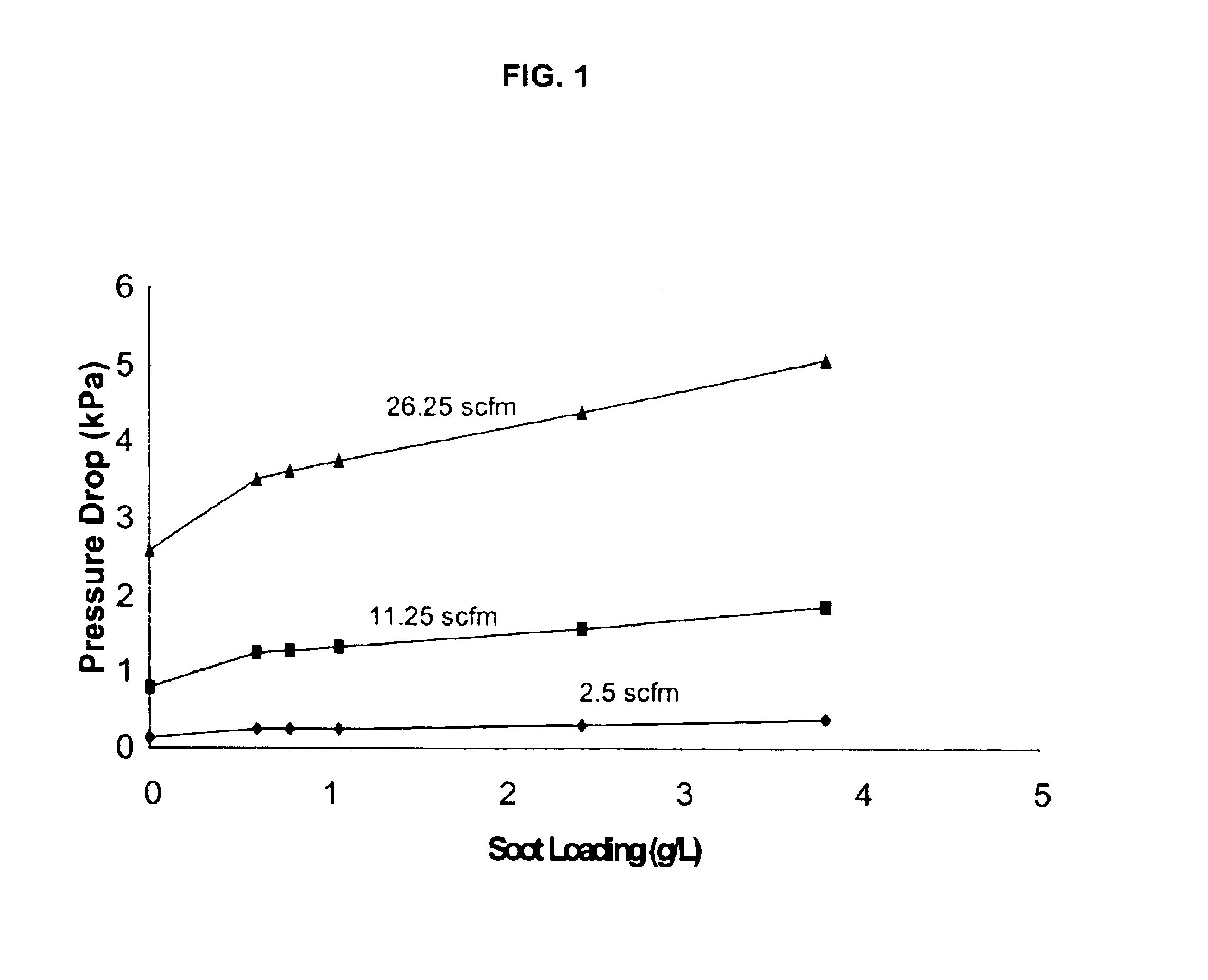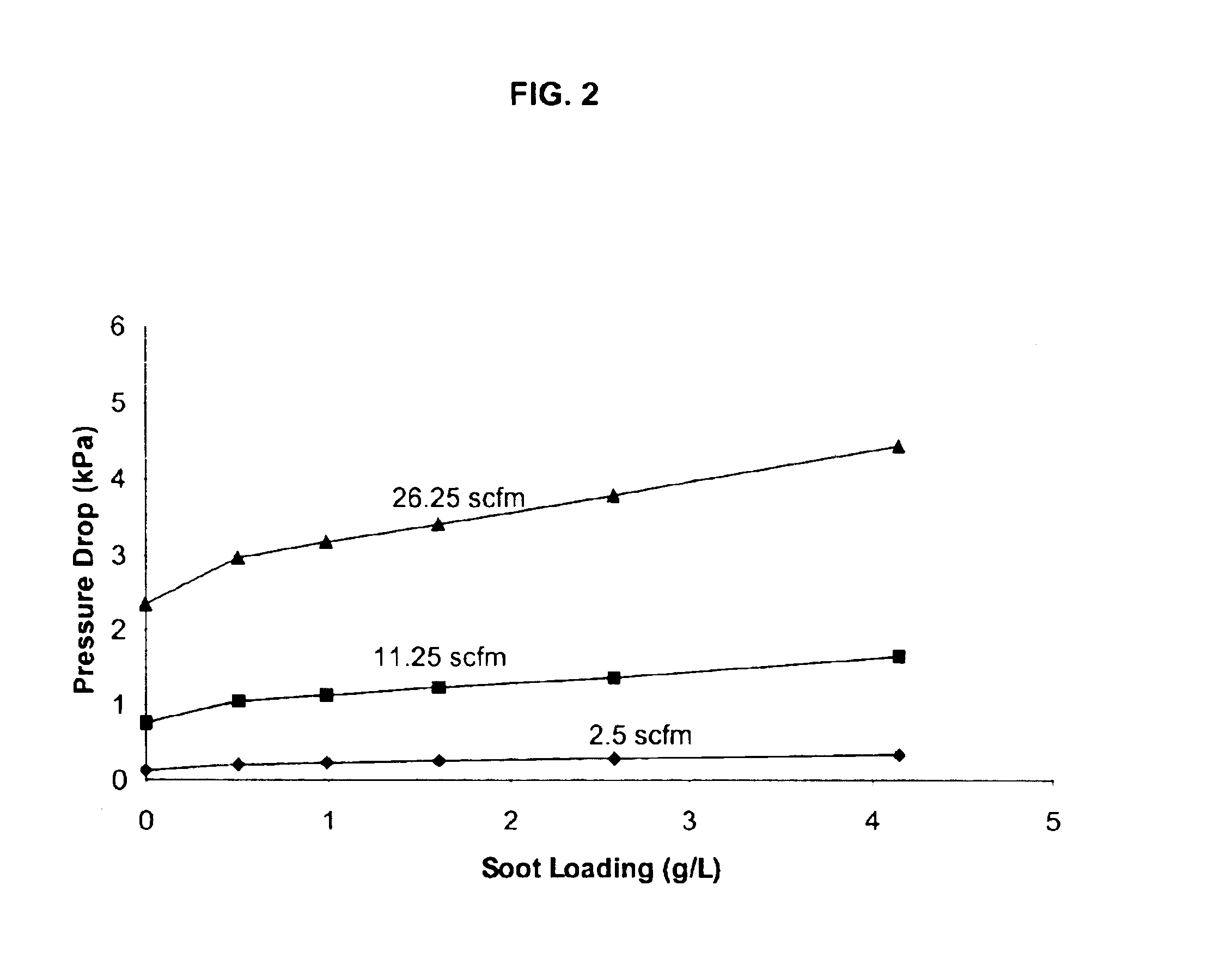Composite cordierite filters
a cordierite filter and composite technology, applied in the field of diesel exhaust filters, can solve the problems of high temperature spikes, cordierite filters showing the tendency to fail, and partial sintering to the surface of the filter wall, so as to improve thermal properties and improve mechanical properties
- Summary
- Abstract
- Description
- Claims
- Application Information
AI Technical Summary
Benefits of technology
Problems solved by technology
Method used
Image
Examples
Embodiment Construction
Tables I and II provide batching and properties information on examples of the present invention. Mixtures were made with powdered reuse cordierite, cordierite-forming raw material powders, and powdered polycrystalline silicon carbide. Methyl cellulose was added as a binder, sodium stearate was added as a lubricant and graphite or polyethylene beads were used as pore formers. All dry raw materials, including binder, lubricant and pore former, were weighed into a container and dry mixed without milling media to provide some homogenization on a macroscopic scale. The mixtures were then transferred into a stainless steel muller to which distilled water was gradually added in a quantity sufficient to impart plasticity to the mixture. The mixture was then extruded into honeycomb cellular bodies having about 200 cells per square inch (31 cells / cm.sup.2), and having a wall thickness of about 0.010 to 0.023 inches (0.025 to 0.058 cm).
The extruded cellular bodies were next optionally dried a...
PUM
| Property | Measurement | Unit |
|---|---|---|
| pore size | aaaaa | aaaaa |
| porosity | aaaaa | aaaaa |
| porosity | aaaaa | aaaaa |
Abstract
Description
Claims
Application Information
 Login to View More
Login to View More - R&D
- Intellectual Property
- Life Sciences
- Materials
- Tech Scout
- Unparalleled Data Quality
- Higher Quality Content
- 60% Fewer Hallucinations
Browse by: Latest US Patents, China's latest patents, Technical Efficacy Thesaurus, Application Domain, Technology Topic, Popular Technical Reports.
© 2025 PatSnap. All rights reserved.Legal|Privacy policy|Modern Slavery Act Transparency Statement|Sitemap|About US| Contact US: help@patsnap.com


